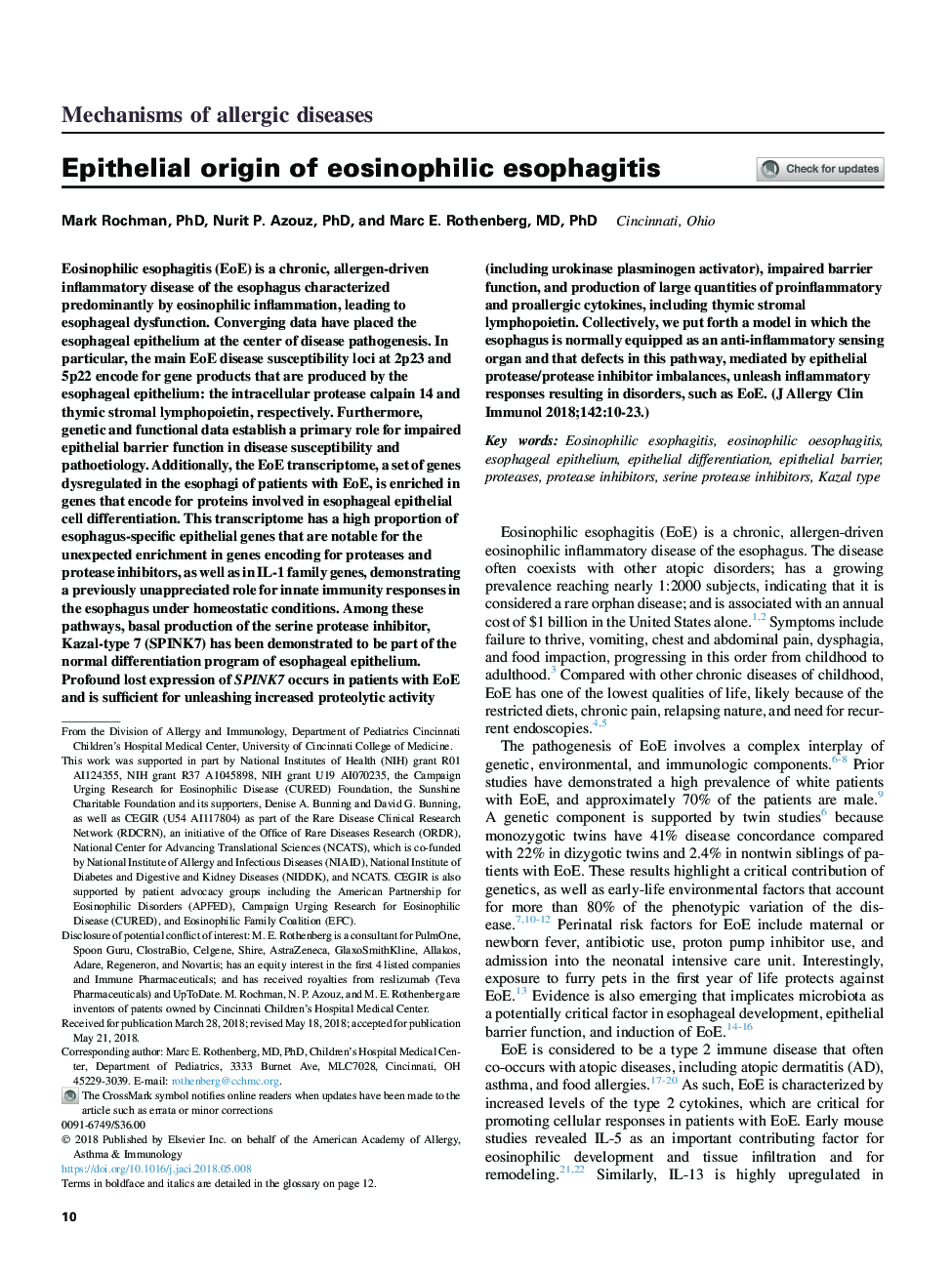| Article ID | Journal | Published Year | Pages | File Type |
|---|---|---|---|---|
| 8712985 | Journal of Allergy and Clinical Immunology | 2018 | 14 Pages |
Abstract
Eosinophilic esophagitis (EoE) is a chronic, allergen-driven inflammatory disease of the esophagus characterized predominantly by eosinophilic inflammation, leading to esophageal dysfunction. Converging data have placed the esophageal epithelium at the center of disease pathogenesis. In particular, the main EoE disease susceptibility loci at 2p23 and 5p22 encode for gene products that are produced by the esophageal epithelium: the intracellular protease calpain 14 and thymic stromal lymphopoietin, respectively. Furthermore, genetic and functional data establish a primary role for impaired epithelial barrier function in disease susceptibility and pathoetiology. Additionally, the EoE transcriptome, a set of genes dysregulated in the esophagi of patients with EoE, is enriched in genes that encode for proteins involved in esophageal epithelial cell differentiation. This transcriptome has a high proportion of esophagus-specific epithelial genes that are notable for the unexpected enrichment in genes encoding for proteases and protease inhibitors, as well as in IL-1 family genes, demonstrating a previously unappreciated role for innate immunity responses in the esophagus under homeostatic conditions. Among these pathways, basal production of the serine protease inhibitor, Kazal-type 7 (SPINK7) has been demonstrated to be part of the normal differentiation program of esophageal epithelium. Profound lost expression of SPINK7 occurs in patients with EoE and is sufficient for unleashing increased proteolytic activity (including urokinase plasminogen activator), impaired barrier function, and production of large quantities of proinflammatory and proallergic cytokines, including thymic stromal lymphopoietin. Collectively, we put forth a model in which the esophagus is normally equipped as an anti-inflammatory sensing organ and that defects in this pathway, mediated by epithelial protease/protease inhibitor imbalances, unleash inflammatory responses resulting in disorders, such as EoE.
Keywords
FollistatinKallikreinWESEoEuPALRRC32TSLPFLGdesmocollindesmoplakinCystatinSPRRuPARTGMIBFNK2 homeobox 1NKX2.1KLKCAPN14IVLIBLTransit-amplifying cellDSG1PAR2DSPEsophageal EpitheliumTACEDCPBLFSTSox2DSCCStSERPINFood allergySTATEosinophilic oesophagitisAliSerine protease inhibitorTransglutaminaseEpithelial differentiationWhole-exome sequencingEMTAtopic dermatitisdesmoglein 1synaptopodinurokinase plasminogen activatorfilaggrinThymic stromal lymphopoietinEpithelial barrierSignal transducer and activator of transcriptionEpidermal differentiation complexBMPGenome-wide association studyGWASProtease inhibitorsserine protease inhibitorsair-liquid InterfaceProteasesBone morphogenetic proteinSingle nucleotide polymorphismSNPKeratinKrtEpithelial-mesenchymal transitioninvolucrinprotease-activated receptor 2Urokinase plasminogen activator receptoreosinophilic esophagitis
Related Topics
Life Sciences
Immunology and Microbiology
Immunology
Authors
Mark PhD, Nurit P. PhD, Marc E. MD, PhD,
